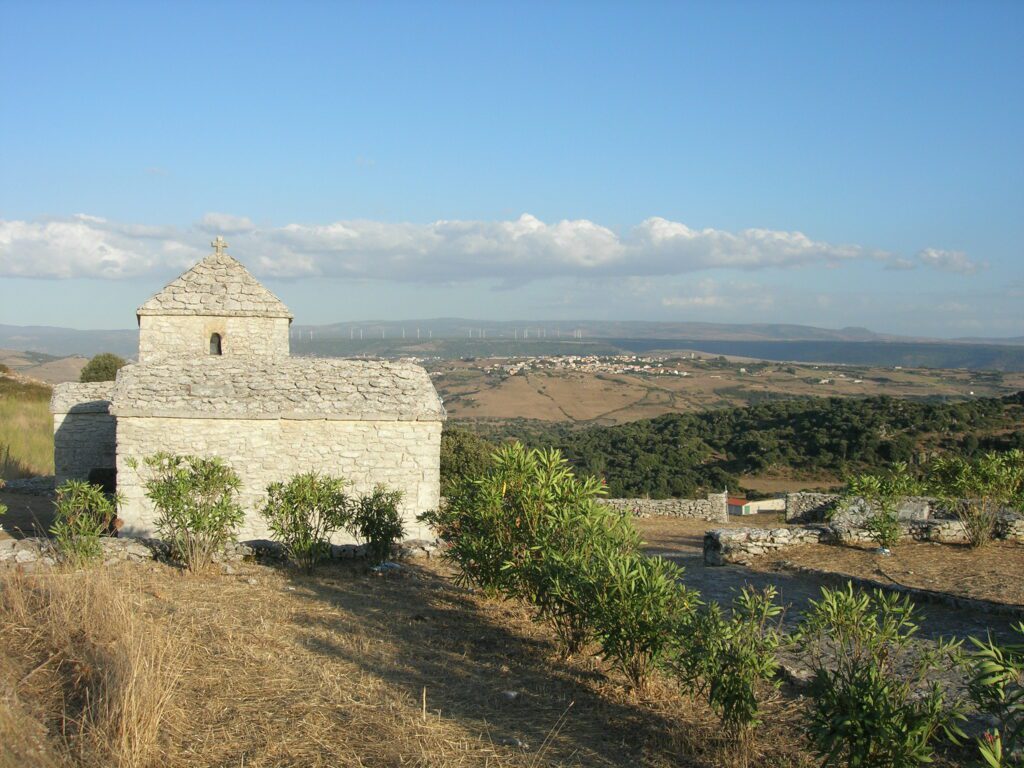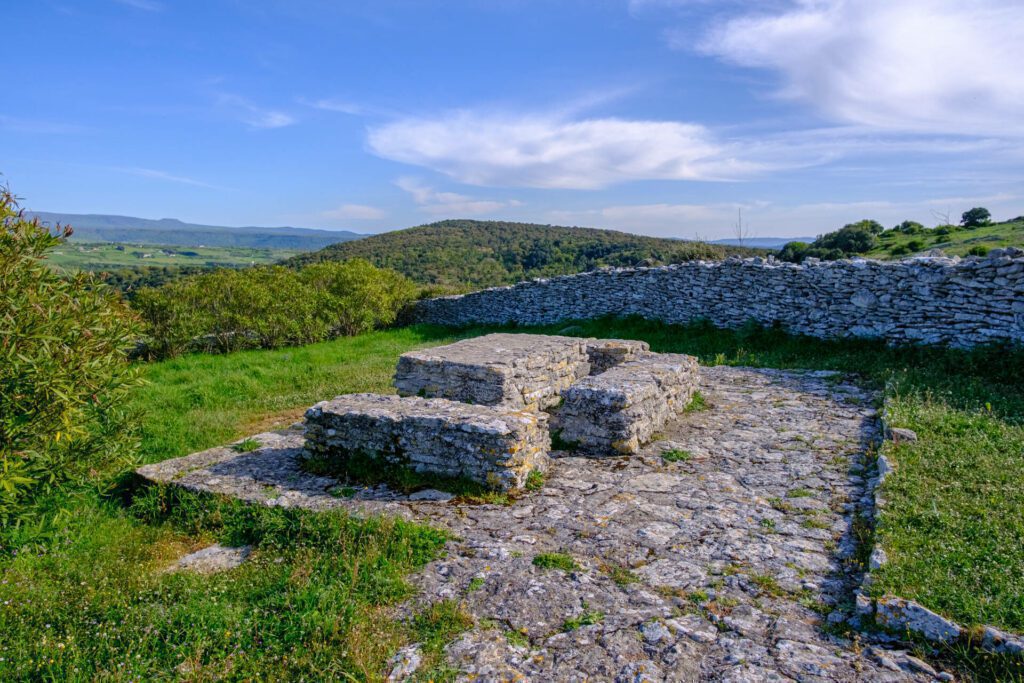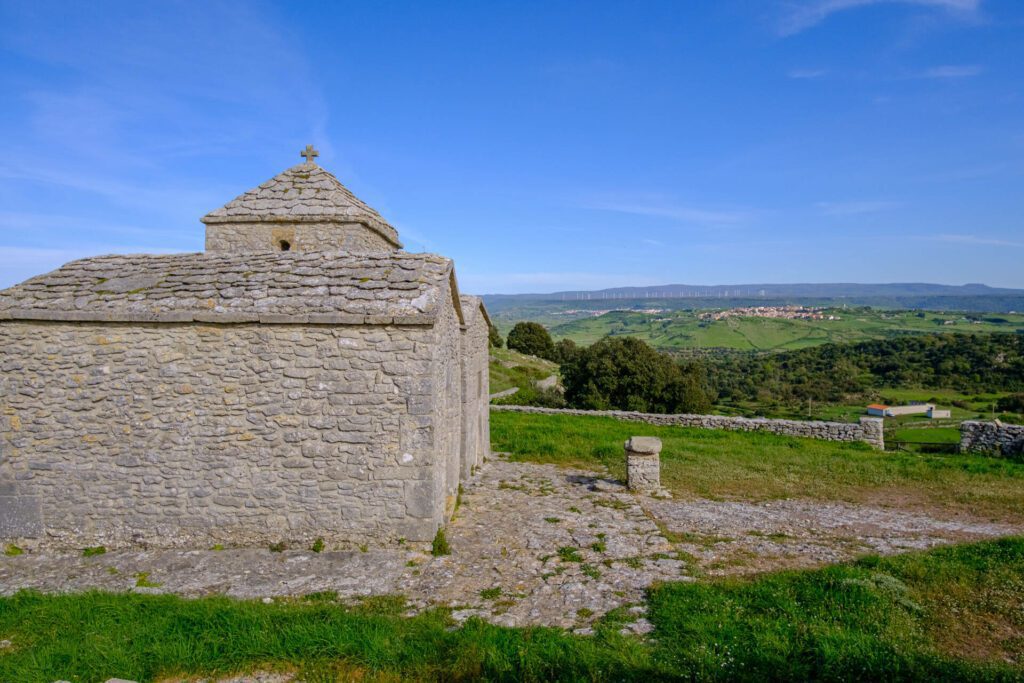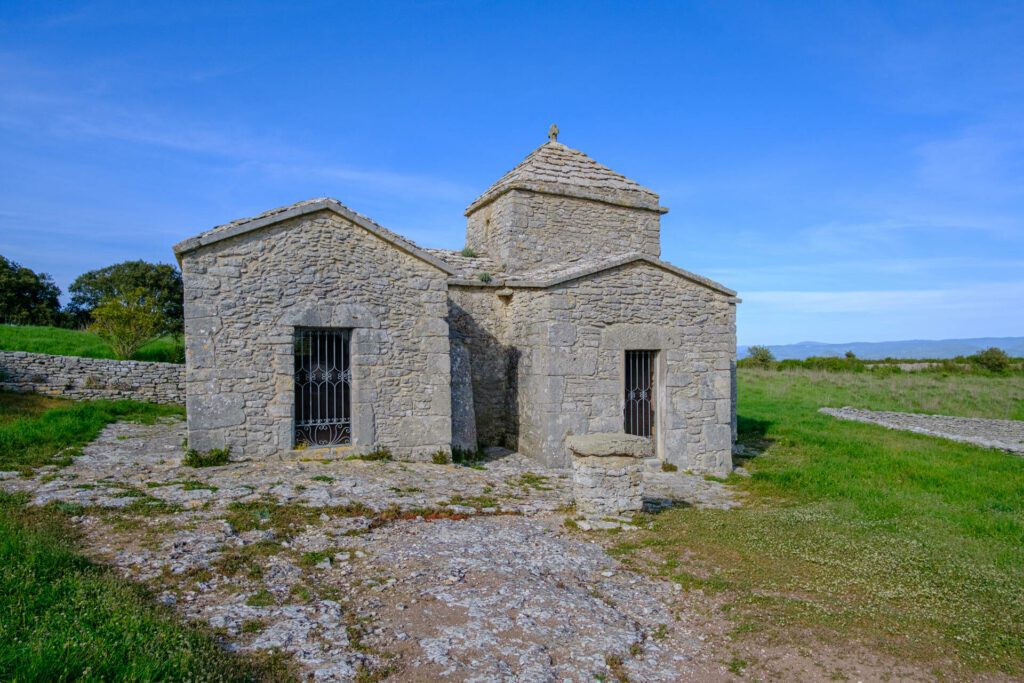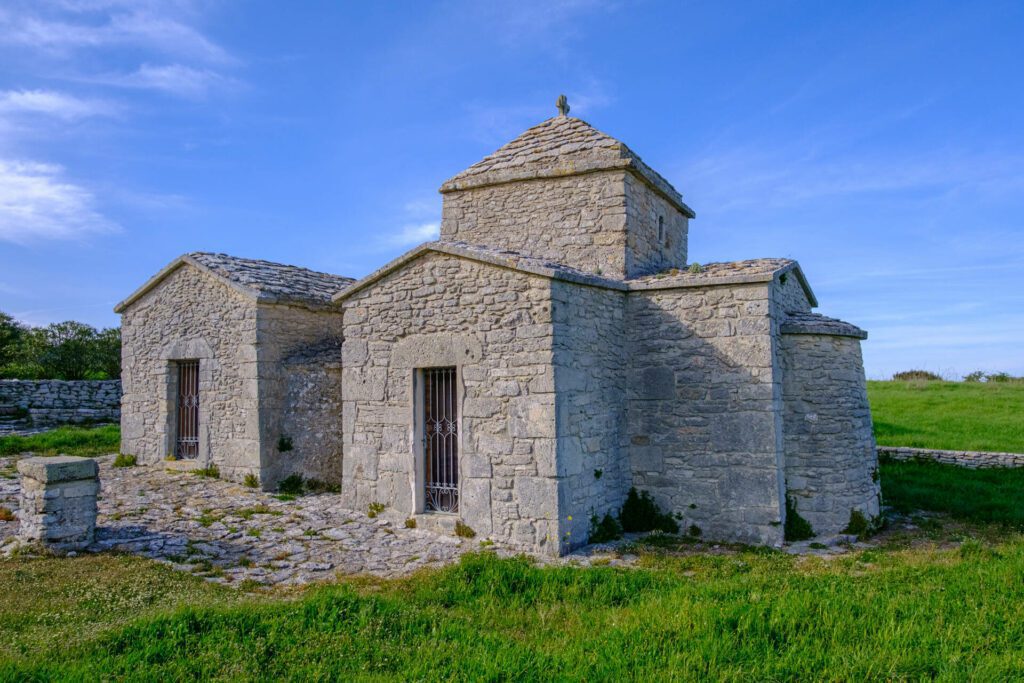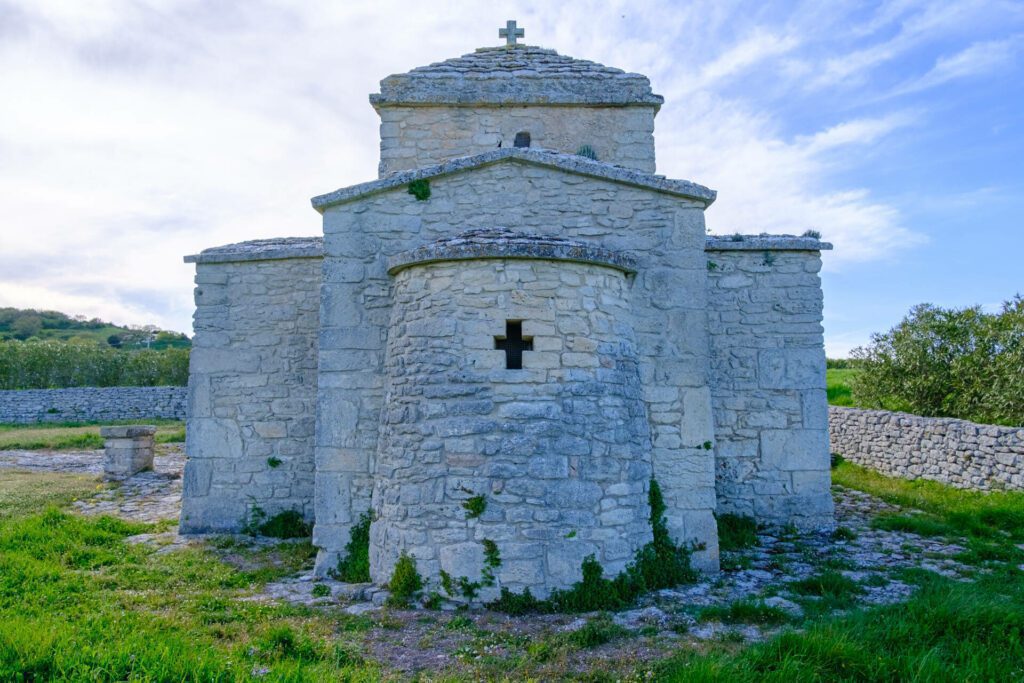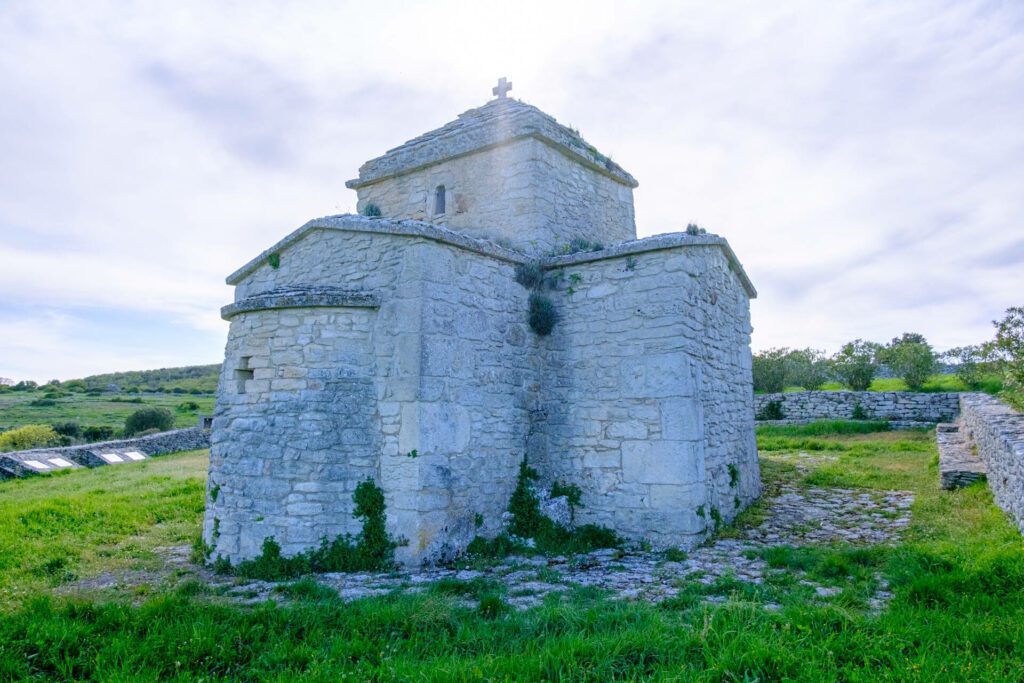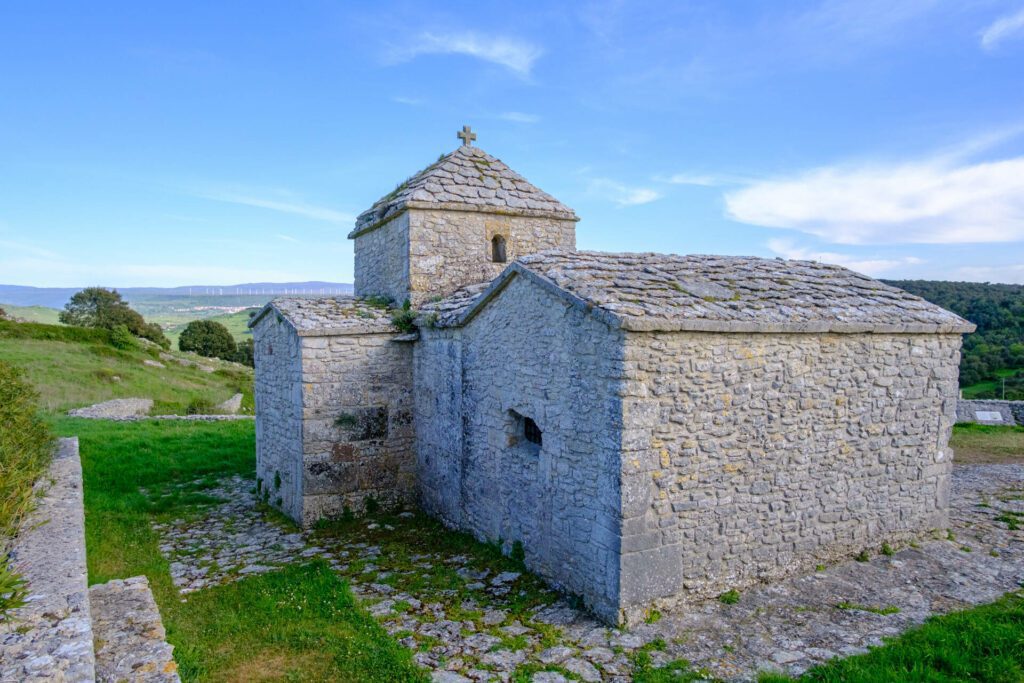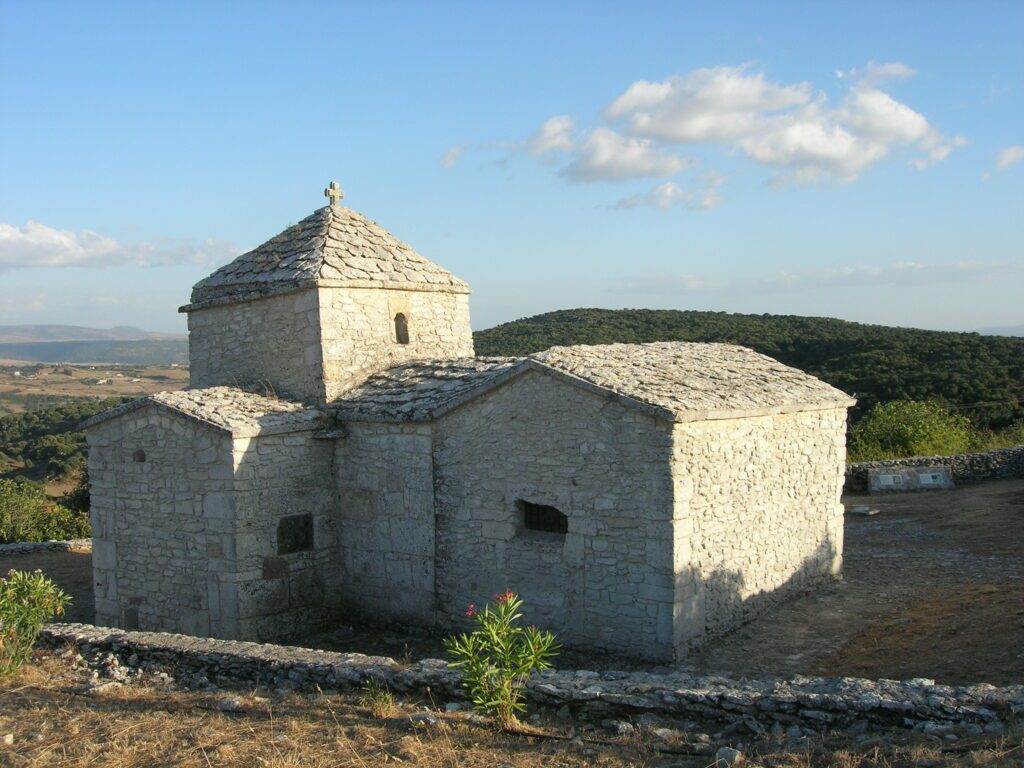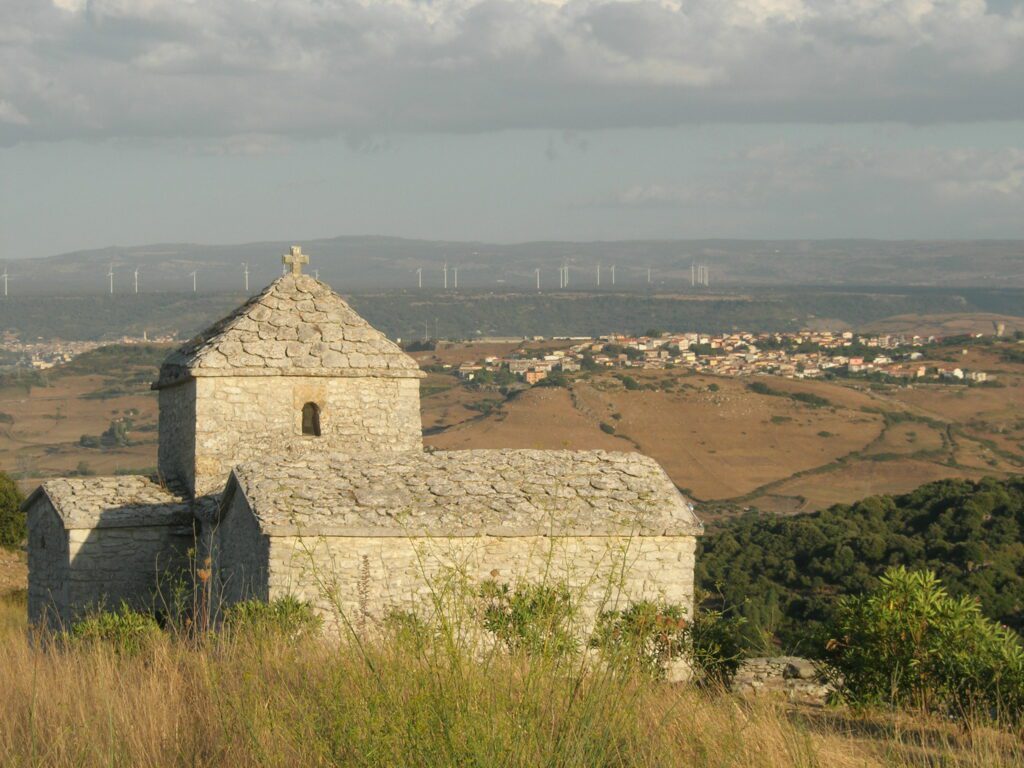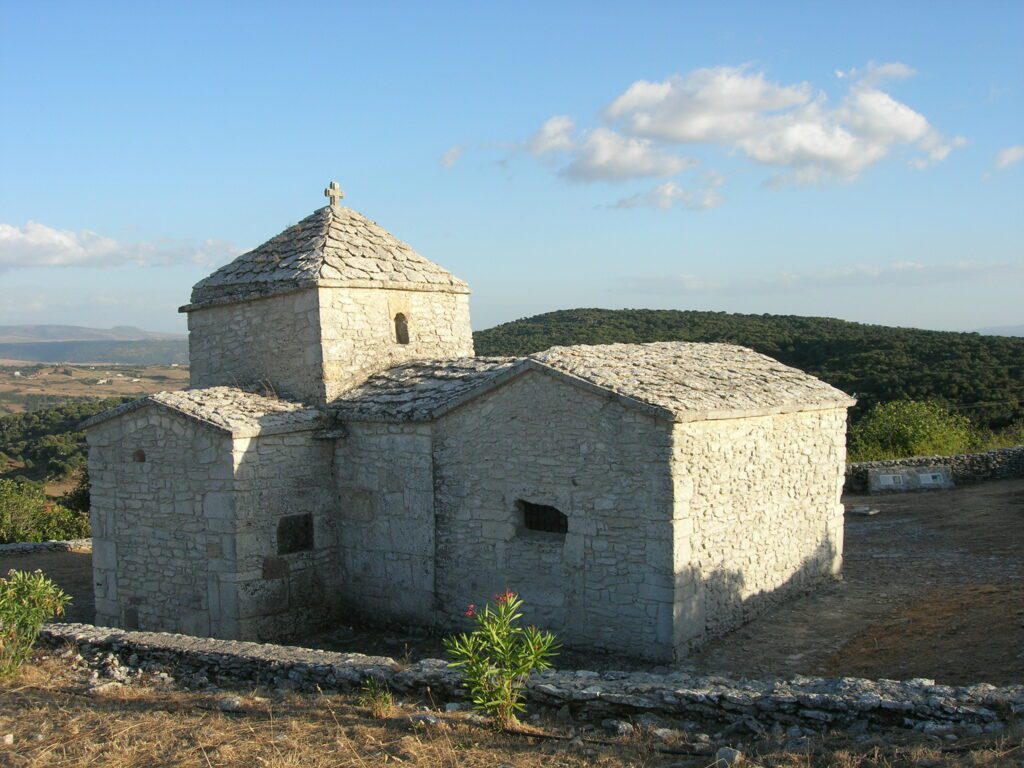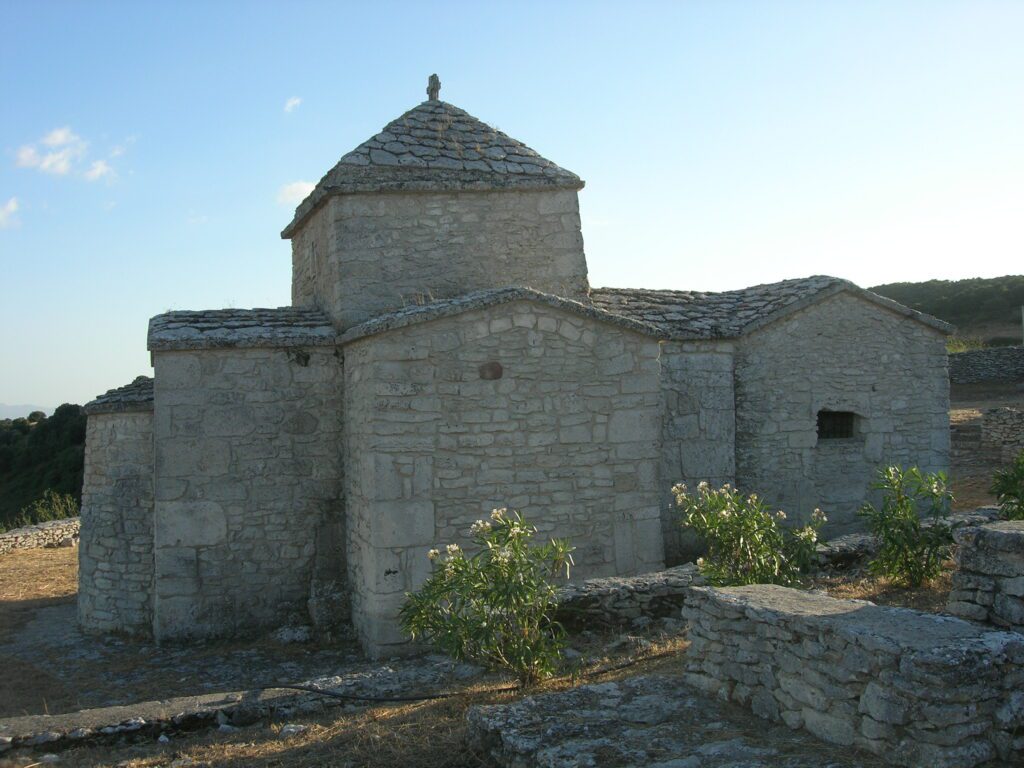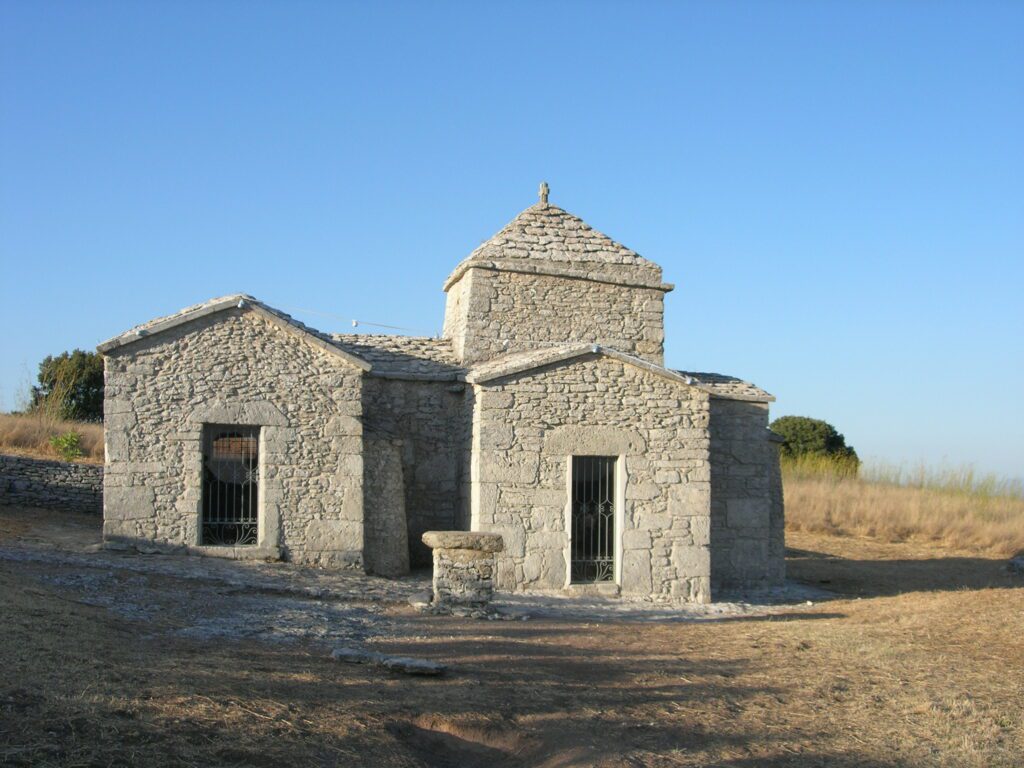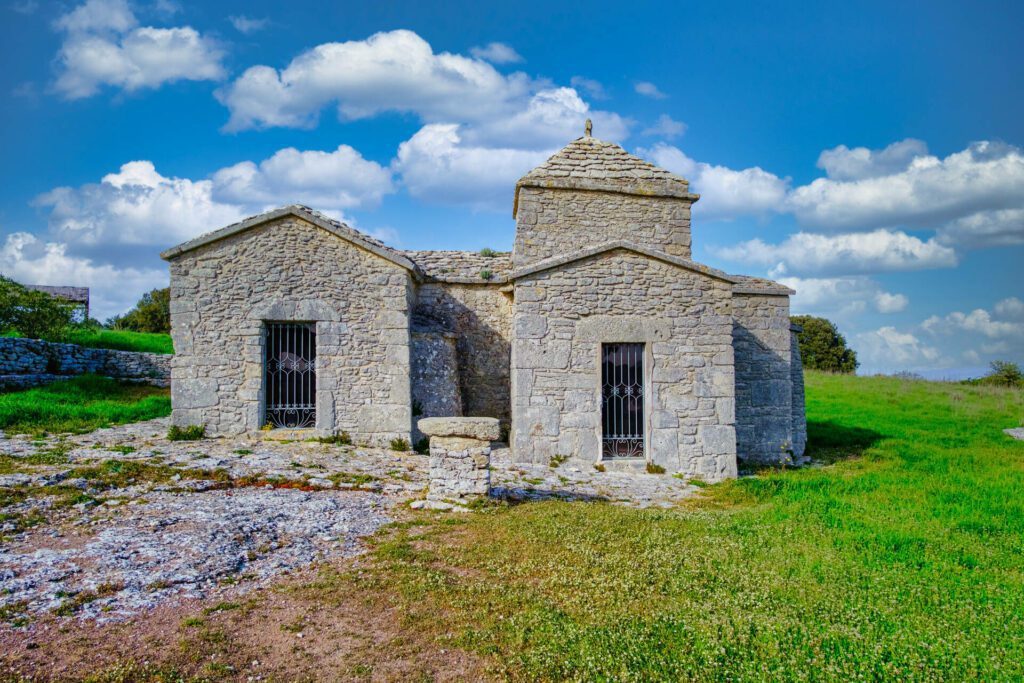Chiesa di Santa Maria Iscalas
Chiesa di Santa Maria Iscalas
The church of Santa Maria Iscalas, located in Cossoine, rises majestically on top of a scenic plateau, dominating the surrounding landscape with its evocative presence. This small architectural jewel is distinguished by its peculiar white limestone construction, characterised by delicate blue hues that give the building a unique and fascinating appearance.
The masonry technique used in the construction of the church reveals considerable building expertise: the large ashlars used to reinforce the corners of the structure contrast harmoniously with the barely hewn ashlars used in the intermediate parts, creating an interesting play of textures and volumes.
The precise dating of the building remains the subject of lively debate within the scientific community. Scholars' hypotheses range over a wide time span, from the 6th-7th century to the 10th-11th century, testifying to the complexity of the historical-architectural analysis of this structure and the need for further in-depth research.
From a planimetric point of view, the church presents a free cross configuration, an architectural solution charged with religious symbolism. The most distinctive and fascinating element of the building is located at the intersection of the arms: here stands a structure called a tiburium, which encloses a dome inside. This architectural feature, visible only from inside the church, is externally concealed by a pyramidal roof, creating an intriguing contrast between the external appearance and the interior spatial complexity.
The interior of the church holds a treasure of inestimable historical and artistic value: ancient medieval wall paintings that have been preserved over the centuries. These frescoes not only enrich the environment from an aesthetic point of view, but also constitute a valuable testimony to medieval sacred art in Sardinia, offering a unique insight into the visual and devotional culture of the time.
The Church of Santa Maria Iscalas thus represents an exceptional example of Sardinian religious architecture, in which construction elements, innovative architectural solutions and precious artistic evidence are harmoniously combined. Its dominant position, combined with the refinement of its construction and the richness of its artistic heritage, make it a monument of primary importance for understanding the history and culture of medieval Sardinia.

